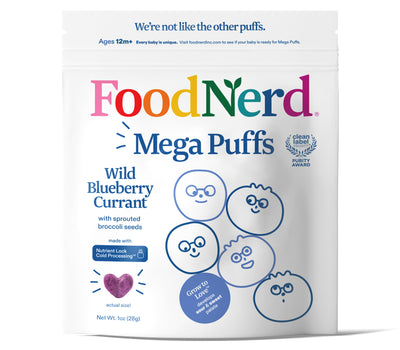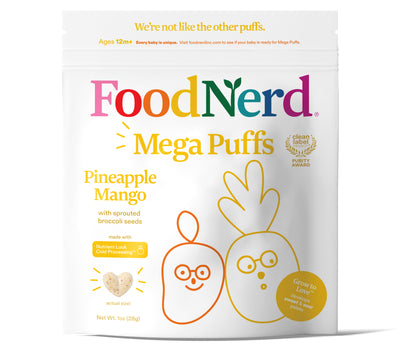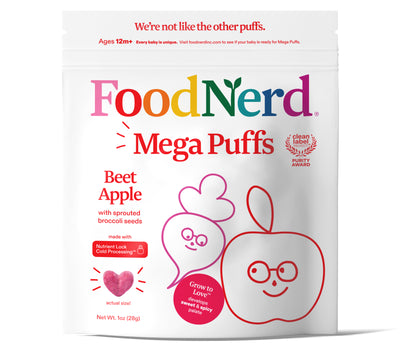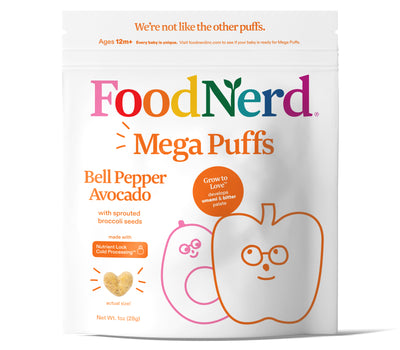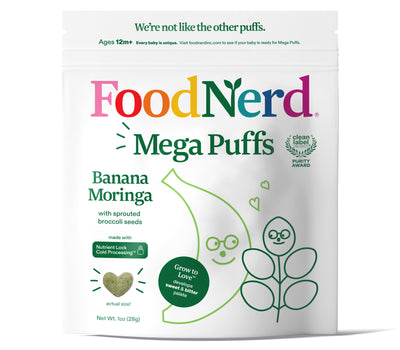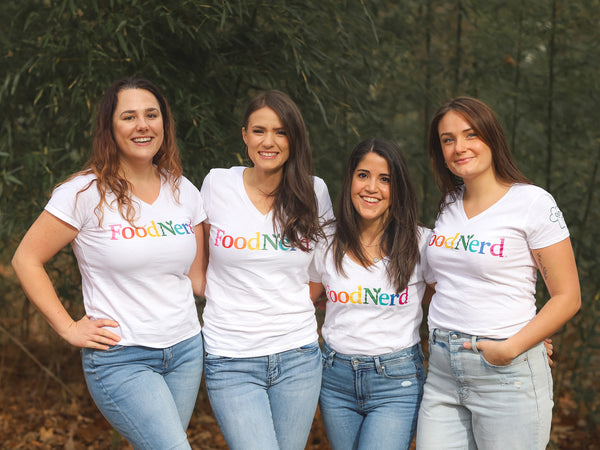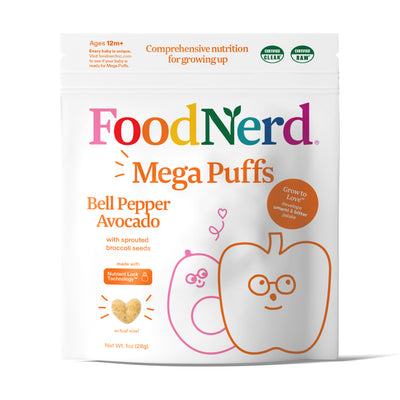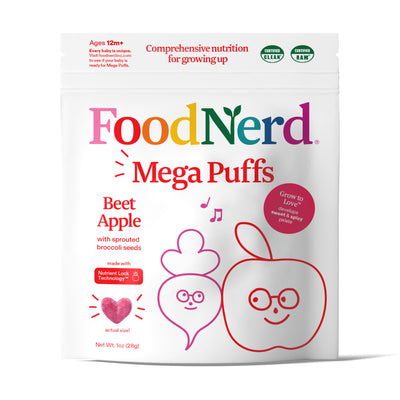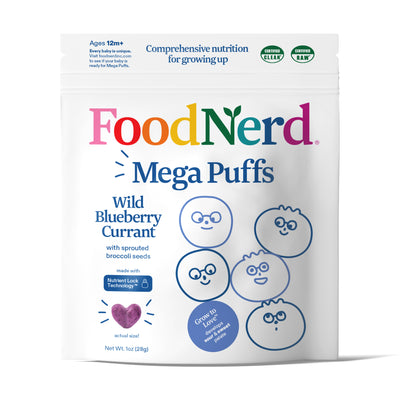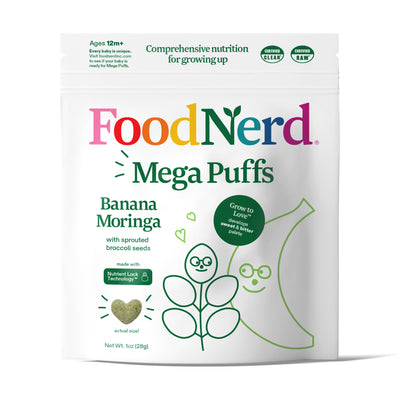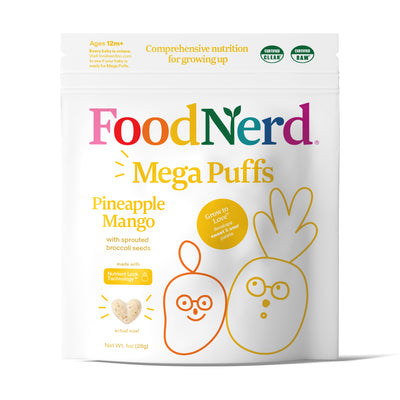We hope you all know a thing or two about sprouts after reading our previous blog article, “The Complete Guide to Sprouts” (if you haven’t already read this, we suggest that you go back and do so—it will give context to what we are talking about here).
In a nutshell, sprouts are packed with a variety of beneficial nutrients that can have a major impact on our health, but just knowing these details aren’t going to do us any good.
We have to put our understanding into action and actually eat sprouted foods on a regular basis (daily is ideal) in order to reap their positive health benefits.
Feeling decision fatigue about which sprouted foods you should add to your diet first?
We are here to help! We suggest starting with broccoli sprouts, which have been thoroughly researched and shown to have a wide-range of health benefits (discussed below).
We will also talk about the health benefits of eating sprouted buckwheat groats, oats, chia, and flaxseed.
Broccoli Sprouts
Broccoli sprouts have gained quite the reputation for being a potent health food, thanks to the massive amount of research that has helped to substantiate these claims.
What makes broccoli sprouts so good for us?
Broccoli sprouts are a rich source of vitamins A, C, E, K and minerals, such selenium, phosphorous, and magnesium.
Broccoli sprouts also contain high amounts of beneficial plant compounds or phytochemicals, including glucosinolates, isothiocyanates, and colored flavonoids called anthocyanins (anthocyanins possess major antioxidant properties).
Yes, this all sounds confusing, but let us break it down for you…
Glucosinolates are derived from amino acids and are particularly abundant in cruciferous vegetables.
They are not biologically active molecules, meaning that they are unable to have an effect on our human biology and therefore do not impact our health. However, when plant tissue is mechanically ground (aka chewing) or chopped, this causes a reaction that converts inactive glucosinolates to bioactive isothiocyanates.
Because isothiocyanates are active compounds, they have the ability to make a profound impact on our health.
How so?
An isothiocyanate of great interest, called sulforaphane is found in broccoli sprouts in significantly higher amounts (up to 100x more) than actual broccoli.
Research has shown that sulforaphane has the following health benefits:
- Protects against various types of cancer - has been shown to block tumor growth by causing apoptosis or death of cancer cells
- Decreases the risk of cardiovascular disease
- Helps in autism and osteoporosis
- Decreases constipation
- Significantly decreases circulating insulin in diabetes patients
- Prevents oxidative stress
- May improves cognitive function in patients with schizophrenia
- Reduces markers of inflammation
A recent (2019) study showed that dietary intervention with broccoli sprouts (30g per day for just over 2 months—that’s a half cup!) significantly reduced inflammation in obese subjects. This is important because obesity is a condition that is characterized by low-grade, chronic inflammation, which is a risk factor for cardiovascular disease, metabolic syndrome, and diabetes.
Convinced yet that you should go out and get your hands on some broccoli sprouts?
If you cannot picture yourself eating broccoli sprouts on a regular basis, you are in luck—FoodNerd expertly sprouts their broccoli seeds to be at their nutritional peak and are working on adding them to future products!
This is a win-win, you can enjoy food that tastes amazing and still reap the nutritional benefits from it!
Sprouted Buckwheat Grouts

Buckwheat is a pseudocereal (means that it is a non-grass cereal plant) native to central Asia. It is gluten-free and rich in nutrients, such as B vitamins, protein, amino acids, and mineral compounds, such as magnesium, zinc, iron, copper, and manganese.
Besides being used for food, it has also been used as a medicinal plant in traditional Chinese medicine.
When buckwheat groats are sprouted:
- Biologically active plant compounds are significantly increased
- Polyphenols - has been shown to increase by 493% after sprouting)
- Rutin - has been shown to increase by 1975% after sprouting)
- Quercitin - has been shown to increase by 4,591% after sprouting)
- Ascorbic acid - has been shown to increase by 109% after sprouting/ascorbic acid is only found in buckwheat groats when sprouted
- Levels of anti-nutrients are decreased (prevent absorption of important minerals)
- Makes buckwheat groats easier to digest
Now there is a lot to talk about here, but we only have time to discuss what stands out—mainly rutin and quercitin.
Rutin and quercitin are the main flavonoid compounds (flavonoids are a type of polyphenol that have major antioxidant properties) found in sprouted buckwheat.
Research has shown that flavonoids have the following pharmacological effects/health benefits:
- Anti-allergic
- Anti-viral
- Anti-cancer
- Antioxidant properties
- Reduces cholesterol levels in the blood
- Keeps blood vessel walls strong and flexible
- Reduces high blood pressure
- Reduces the risk of arteriosclerosis (clogging of blood vessels with fatty plaque)
Sprouted Oats

Oats are a cereal grain that is naturally gluten free and contains nutrients, such as fiber, β-glucans, protein, vitamin B1, and mineral compounds, such as iron, magnesium, phosphorus.
β-glucans are a type of soluble fiber that has been shown to suppress appetite and promote gut health.
Oats are the only cereal to contain more than 25 unique polyphenols called avenanthramides, which have been shown to have the following pharmacological effects/health benefits:
- Anti-inflammatory
- Anti-atherogenic - prevents the formation of fatty plaque in arteries
- Anti-proliferative - helps to prevent the spread of malignant cells/tumor formation
- Anti-cancer
- Antioxidant properties
When oats are sprouted:
- Crude protein increases
- Albumin content increases - rich in essential amino acids lysine and tryptophan
- Levels of anti-nutrients are decreased - prevent absorption of important minerals
- Makes oats easier to digest
- The content of avenanthramides are increased - has been shown to increase by 20% after sprouting
Sprouted Chia Seed

Chia is an annual herbaceous plant that grows from western Mexico to northern Guatemala.
Chia seeds were an important staple in the diet of the ancient Mayans and Aztecs—the Aztecs even offered chia to their gods!
Chia is a good source of omega-3 and omega 6 fatty acids, protein, and fiber. It also contains vitamins K and B6 and mineral compounds, such as calcium, magnesium, phosphorous, and selenium.
Omega-3s and omega-6s are essential fatty acids that our bodies cannot make.
Americans consume more than enough omega-6s, however, omega-3s are harder to come by in the typical American diet. Chia actually contains more omega-3 fatty acids than salmon!
Omega-3s have the following health benefits:
- Form cell membranes throughout the body
- Help to make hormones that regulate blood clotting, contraction and relaxation of artery walls, and inflammation
- May enhance cognitive performance
- May lower cholesterol levels
- May prevent heart disease and stroke
- May play a protective role in cancer and other conditions
Chia also contains a higher amount of protein and fiber than most grains. This protein is more complete in terms of its amino acid content.
Chia is also rich in beneficial plant compounds called polyphenols, which are derived from caffeic acid and may protect the body from free radicals, aging, and cancer.
When chia is sprouted:
- Polyphenol content is increased along with their associated antioxidant activity
- Protein content is significantly increased
Sprouted Flaxseed

Flax is an annual herb that is thought to have originated in the Mediterranean region of Europe.
Flaxseed contains a high amount of dietary fiber, omega-3 fatty acids, and protein. It also contains vitamin B1 and mineral compounds, such as magnesium and manganese.
It is one of the richest sources of lignans, which are beneficial plant compounds.
Lignans have been shown to have antioxidant properties and may protect against cancer and cardiovascular disease.
When flaxseeds are sprouted:
- Lignan content significantly increases
- The phytochemical profile and antioxidant activities of the plant are significantly enhanced
Conclusion
Broccoli, buckwheat groats, oats, chia, and flaxseed are all superfoods in their own right, but even more so when they are sprouted. Sprouting these foods significantly enhances their already stellar nutrient profiles.
We can, therefore, call these sprouted foods true functional foods—meaning that they may play a role in reducing the risk of chronic diseases and have powerful health-promoting properties.
These functional foods are inexpensive (unlike fancy superfood concoctions that you might see on social media) and can be easily found in your local grocery or health food store.
You can also find these sprouted foods in FoodNerd products. Intrigued? Check out our Broccoli Sprout Powder and Mega Puffs.
Note from Our Founder:
Sprouting was completely foreign to me until I came across it years ago and ever since then I’ve become obsessed! Mainly because of the difference that I felt when I would eat sprouted foods/flours. The changes I felt were immediate. I used to get a lot of bloating when I ate grains but when I started using sprouted grains my digestion was a much smoother process. That's when I realized how good you can feel when you eat sprouted, it's a different level of health!
I wanted to make eating sprouted easier for the masses, which is why all our products are made with sprouted ingredients!
- Xo,
Sharon
Sources:
- Benincasa, Paolo, et al. "Sprouted grains: A comprehensive review." Nutrients 11.2 (2019): 421.
- Yang, Jun, et al. "In vitro total antioxidant capacity and anti-inflammatory activity of three common oat-derived avenanthramides." Food Chemistry 160 (2014): 338-345.
- Caterina, Brajdeș, and Vizireanu Camelia. "Sprouted buckwheat an important vegetable source of antioxidants." The Annals of the University Dunarea de Jos of Galati. Fascicle VI-Food Technology 36.1 (2012): 53-60.
- Wang, Hong, et al. "Effect of germination on vitamin C, phenolic compounds and antioxidant activity in flaxseed (Linum usitatissimum L.)." International journal of food science & technology 50.12 (2015): 2545-2553.
- Gómez-Favela, Mario Armando, et al. "Improvement of chia seeds with antioxidant activity, GABA, essential amino acids, and dietary fiber by controlled germination bioprocess." Plant foods for human nutrition 72.4 (2017): 345-352.
- de Falco, Bruna, Mariana Amato, and Virginia Lanzotti. "Chia seeds products: an overview." Phytochemistry Reviews 16.4 (2017): 745-760.
- López-Chillón, María Teresa, et al. "Effects of long-term consumption of broccoli sprouts on inflammatory markers in overweight subjects." Clinical Nutrition 38.2 (2019): 745-752.
- Abellán, Ángel, et al. "Sorting out the value of cruciferous sprouts as sources of bioactive compounds for nutrition and health." Nutrients 11.2 (2019): 429.
- Vanduchova, Alena, Pavel Anzenbacher, and Eva Anzenbacherova. "Isothiocyanate from broccoli, sulforaphane, and its properties." Journal of medicinal food 22.2 (2019): 121-126.
- Shiina, Akihiro, et al. "An open study of sulforaphane-rich broccoli sprout extract in patients with schizophrenia." Clinical Psychopharmacology and Neuroscience 13.1 (2015): 62.
